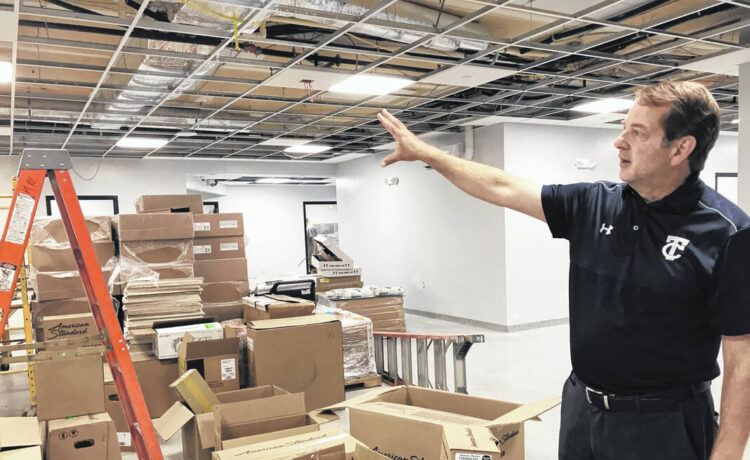LIMA — Temple Christian School will welcome its largest kindergarten class when it opens the doors of its new elementary school in August.
Demand for admission to the private Christian school is growing as more children apply for Ohio’s expanded EdChoice scholarship, so much so that state lawmakers offered a $250,000 grant to assist with the school’s $3 million expansion project.
The grant comes from the One-Time Strategic Community Investment Fund, a $717 million grant fund included in Ohio’s $3.5 billion capital budget to support community projects.
Lawmakers will award nearly $4 million in grants to private schools from the OTSCIF fund this year, as well as another $4 million for community school, vocational school and traditional public school projects throughout the state, including $250,000 for Heir Force Academy’s forthcoming expansion.
“These are schools … where demand was outpacing the space that they had available in their communities,” said Troy McIntosh, executive director of the Ohio Christian Education Network, which saw six of its member schools receive grants.
The private school grants are a small portion of the state’s capital budget, which sets aside more than $600 million for public school building funds, but they represent a new frontier for the school-choice movement in Ohio.
Lawmakers extended eligibility for EdChoice, the largest of Ohio’s five voucher programs, to all Ohio families last summer, a key legislative goal for Senate President Matt Huffman, who identified capacity as “the next big issue” for school choice in an interview with the Columbus Dispatch.
The Lima News could not reach Huffman through his spokesperson to comment for this article.
“That might not seem like very much, but that’s the way the Cleveland voucher experiment started,” said William Phillis, executive director of the Ohio Coalition for Equity & Adequacy of School Funding, which is working with a coalition of public schools to sue the state over its voucher system.
The case is set for trial in November.
Ohio’s voucher system started with the Cleveland scholarship in 1996.
The scholarship, which provided taxpayer-funded scholarships for students in struggling Cleveland schools to attend private school, started small with a $3 million or $4 million budget, Phillis said.
“Now it’s a billion-dollar boondoggle for the state budget,” Phillis said.
Ohio spent nearly $1 billion on vouchers in the past school year as more families had access to the program, which previously restricted EdChoice eligibility based on income or performance of the student’s home district.
Now, families earning up to 450% of federal poverty level, or $135,000 for a family of four, qualify for the full scholarship, which amounts to $6,166 for children in kindergarten through eighth grade and $8,408 for grades 9-12.
The highest earners are eligible for $650 per child enrolled in K-8 and $950 per child attending a private high school.
To Allen County Democratic Party Chair Rochelle Twining, the legislature’s latest effort to support private schools is part of a concerted effort to take over public education.
“The steps are all there,” Twining said. “Eliminate our ability to elect a state school board. Eliminate our ability to fund public schools. Give private schools additional funding to expand their facilities and load them up with tax dollars.”
To McIntosh, the funding ensures families have options by allowing private schools to meet demand in their communities.
While McIntosh said he does not expect future funding for such projects, he said the grants are “a good way to help students” if the state has the financial wherewithal to continue.
His network is working with 17 churches across the state to start private schools in so-called choice deserts, primarily rural and urban areas where few Christian schools exist, by leveraging existing buildings like churches to start new schools for about $100,000.
“We recognize part of the value of having a great program like EdChoice comes when kids have real options,” McIntosh said, “so we want to make sure that from our perspective, Christian school options are available to any kid who chooses that in the state.”















